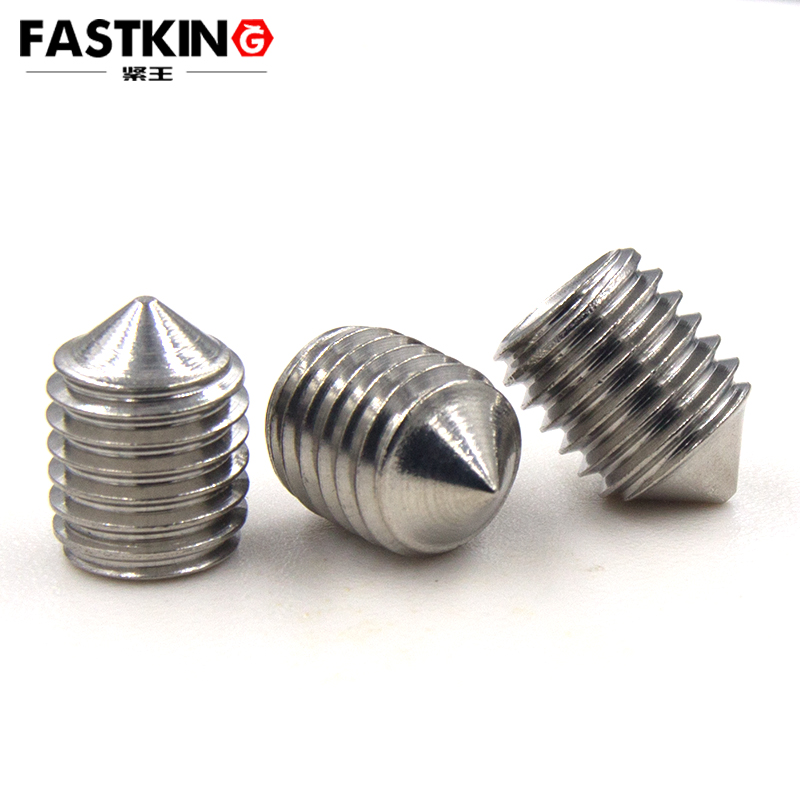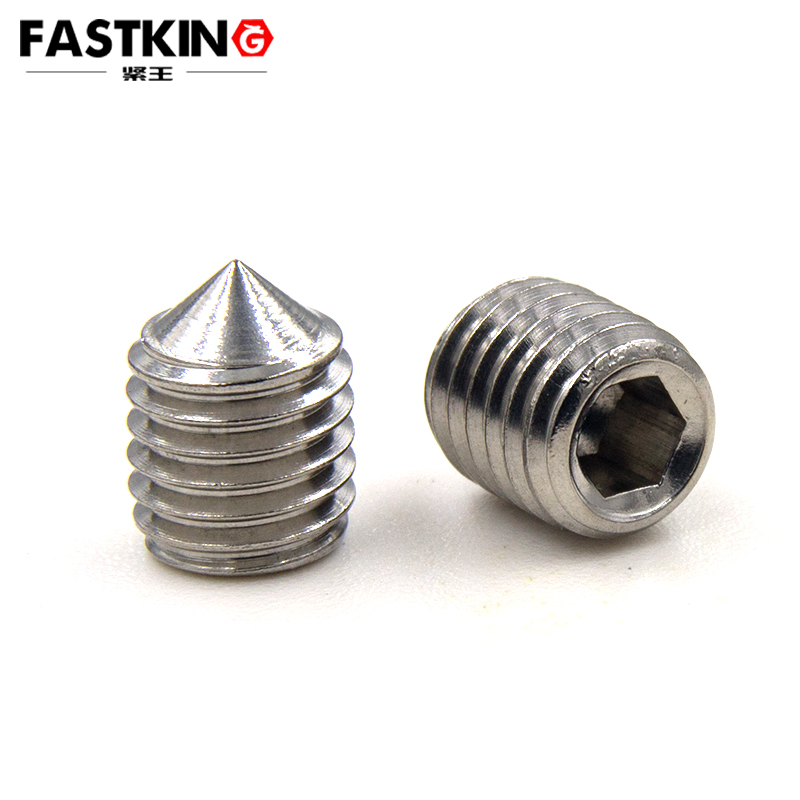Tapered-end set screws are a common mechanical fastening method widely used in various mechanical equipment and engineering structures. By achieving tight contact between the tapered end face and the mating hole, they provide axial fixation and torque transmission. This article will detail the usage methods of tapered-end set screws and their applications in different scenarios.
Basic Structure of Tapered-End Set Screws

Tapered-end set screws typically consist of a tapered end face and a threaded portion. The tapered end face tightly contacts the conical inner wall of the mating hole, and the tightening force from the threaded portion causes radial expansion of the tapered end face, thereby achieving a fastening effect. Common types include tapered-end set screws and tapered-end set pins.
Usage Methods of Tapered-End Set Screws
Preparation
Before using tapered-end set screws, the following preparations are necessary:
Inspect the Mating Hole: Ensure the conical inner wall of the mating hole is smooth and free of burrs, with dimensions meeting design requirements.
Clean Components: Remove oil, dust, and other impurities from the surfaces of the tapered-end set screw and mating hole to ensure clean contact surfaces.
Select Appropriate Tools: Choose the right wrench or screwdriver based on the type and specifications of the tapered-end set screw.
Installation Steps
Insert the Tapered-End Set Screw: Insert the tapered end face of the screw into the mating hole, ensuring good initial contact.
Initial Tightening: Gently tighten the threaded portion using a tool to achieve preliminary contact between the tapered end face and the mating hole.
Gradual Force Application: Gradually increase the tightening force to cause radial expansion of the tapered end face, ensuring tight contact with the mating hole.
Check Fastening Effect: Confirm that the tapered-end set screw is securely fixed without any looseness.
Removal Steps
Loosen the Threaded Portion: Use a tool to rotate the threaded portion counterclockwise, gradually reducing the tightening force.
Remove the Tapered-End Set Screw: Once the tightening force is sufficiently reduced, gently remove the screw.
Inspect Components: Check for wear on the tapered-end set screw and mating hole, and clean or replace them if necessary.
Application Scenarios of Tapered-End Set Screws
Mechanical Equipment
In mechanical equipment, tapered-end set screws are commonly used in the following scenarios:
Shaft and Hub Connection: Tightly connect shafts and hubs using tapered-end set screws to transmit torque and axial force.
Bearing Fixation: Use tapered-end set screws to secure the inner ring of bearings, preventing axial movement.
Transmission Component Positioning: Position gears, pulleys, and other components in transmission systems to ensure precision.
Engineering Structures
In engineering structures, tapered-end set screws are commonly used in the following scenarios:
Steel Structure Connections: Connect beams, columns, and other components in steel structures to enhance stability and load-bearing capacity.
Bridge Fixation: Secure supports and anchor components in bridge construction to ensure safety and durability.
Mechanical Base Fixation: Fix anchor bolts in mechanical equipment installations to prevent equipment displacement.

Automotive Industry
In the automotive industry, tapered-end set screws are commonly used in the following scenarios:
Engine Component Fixation: Secure critical components such as crankshafts and camshafts during engine assembly to ensure proper operation.
Transmission System Connections: Connect components like gearboxes and differentials in transmission systems to transmit power and torque.
Suspension System Fixation: Secure shock absorbers and control arms in suspension systems to ensure vehicle handling and comfort.
4. Aerospace
In the aerospace field, tapered-end set screws are commonly used in the following scenarios:
Engine Component Fixation: Secure critical components such as turbine blades and compressors in aircraft engines to ensure efficient operation.
Fuselage Structure Connections: Connect skin panels and frames in fuselage structures to enhance strength and rigidity.
Spacecraft Fixation: Secure components like solar panels and antennas in spacecraft to ensure proper functionality.
Advantages and Precautions of Tapered-End Set Screws
Advantages

High Fastening Force: The radial expansion of the tapered end face generates high fastening force, ensuring a secure connection.
Self-Locking Function: Tapered-end set screws have a self-locking feature, preventing loosening due to vibration or impact.
Easy Installation and Removal: Installation and removal are relatively simple, facilitating maintenance and replacement.
Precautions
Mating Hole Precision: The conical inner wall of the mating hole must have high precision to ensure tight contact with the tapered-end set screw.
Tightening Force Control: The tightening force should be moderate; excessive force may deform the mating hole, while insufficient force may fail to achieve the desired fastening effect.
Regular Inspection: Periodically check the fastening status of tapered-end set screws and address any looseness or wear promptly.
Conclusion
As an efficient and reliable fastening method, tapered-end set screws are widely used in mechanical equipment, engineering structures, the automotive industry, and aerospace. By following correct usage methods and precautions, their advantages can be fully utilized to ensure secure and safe connections. In practical applications, it is essential to select the appropriate type and specifications of tapered-end set screws based on specific scenarios to ensure performance and reliability.
